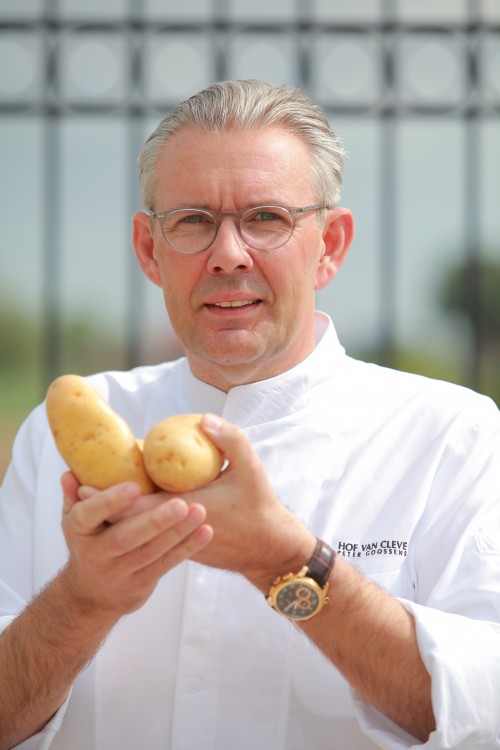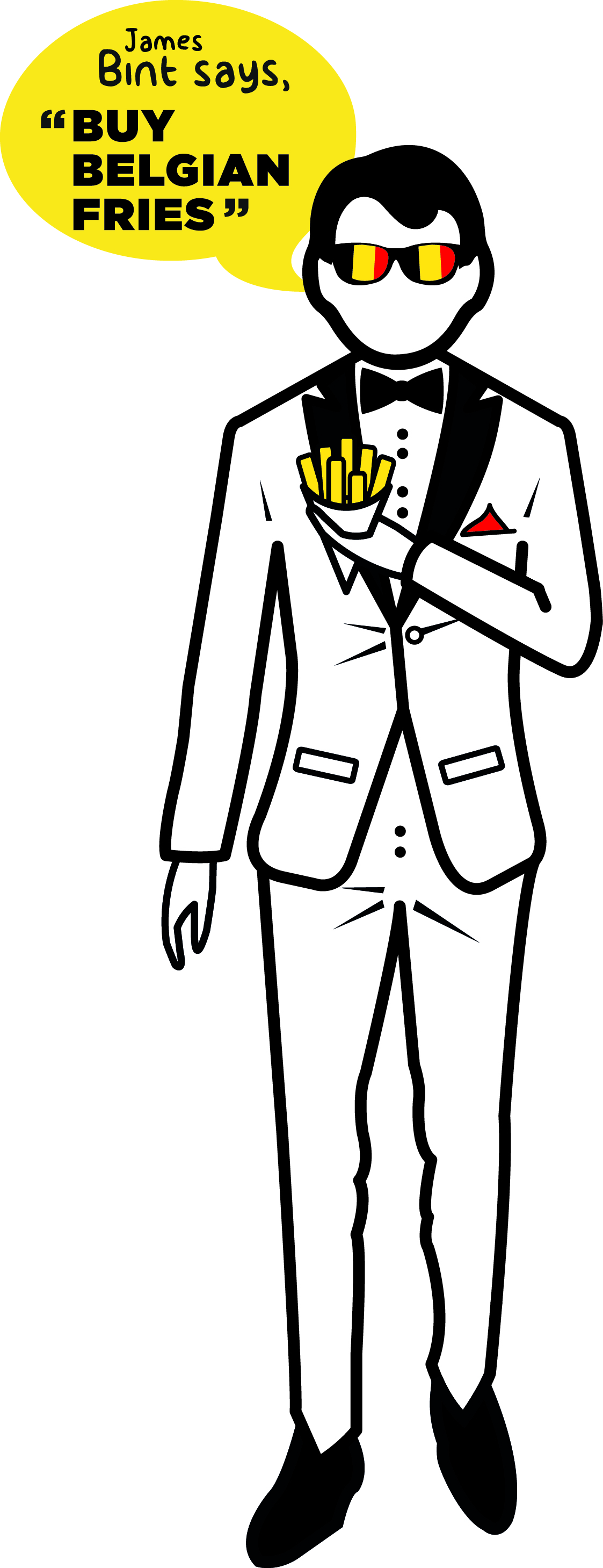“Off course we serve fries,” says Peter Goossens. The chef of Michelin three-star restaurant Hof van Cleve in Kruishoutem needs no encouragement to promote the potato. “It’s a wonderful product, grown in the soil around our restaurant. It’s our damn duty to prepare delicious dishes with it! That’s what we do with our fries: a superb product.” The ideal combination according to Peter Goossens: homemade fries of the potato variety bintjes with mayonnaise and pickles, beef tenderloin and a salad of Belgian chicory.

Belgium is only a small stretch of land along the North Sea. Still, every day and every night 7,500 farmers are growing potatoes there. Planting them, digging them up, keeping them cool, testing and comparing their tastes, improving their growing process,... It’s a craft, a centuries-old tradition. Thanks to the craftmanship of the potato farmer you can taste the best fries of the world, without exaggeration, in Belgium. Peter Goossens totally agrees with that.
“If I had a restaurant in another country I’d put fries on the menu too. Every night French fishermen fish the world’s best langoustines out of the ocean. But in our part of the world we dig up the very best potatoes. And as far as fries are concerned there’s a lot of work to be done abroad. They still call them French fries, for god’s sake. Every time I hear that, I’m offended!”
Talking to Peter Goossens you sense his product knowledge in every single word he says. His secret? Close relations with the farmers who provide him with the very best potatoes. “Here in Kruishoutem, the soil is sandy, which is ideal for the early season potatoes. A little bit further, in Oudenaarde, the soil is much heavier and much more solid. That’s the ideal soil for bintjes. How do we know? Because farmers have been testing what kind of soil matches what kind of potato for years.”

West-Flemish beef
According to Peter Goossens the only way to enjoy the full taste of fries is when served in thin slices and combined with other home-grown products. Above all a delicious piece of tender meat. That might be Japanese wagyu, but West-Flemish beef is even better. The Three Michelin-starred Chef thinks you should always watch out with famous names of meat appellations on a menu. “For a breed such as Holstein only three cows out of ten are top! The same goes for Aberdeen. What you need is an experienced livestock buyer, who can tell which cows of a specific breed are top just by looking at their build. A tradesman who has a feeling for picking the best pieces of meat. Unfortunately, the craft is slowly disappearing. “
Chicory salad with mustard mayonnaise
Besides meat, fries need some vegetables on the side. At the suggestion of cooked red cabbage, Goossens almost loses his temper.
“That can’t possibly taste well. The mere smell of it makes me sick. Fries need a fresh salad. In summer a tomato salad or a mixed salad with lettuce, lettuce hearts, rocket and a thick dressing. In winter there is nothing like a chicory salad with a touch of mustard mayonnaise.”
Mayonnaise! He said it. The chef himself said it. Can you actually ask the waiter for some mayo in a star restaurant? “Why not?,“ says Peter Goossens. “We always serve mayonnaise with our fries! Hof van Cleve even adds a portion of pickles to it. The idea is that you mix both sauces on your plate and take the time to soak each fry in it. It is simply heaven!”
7 steps to the most delicious fries
- Choose
 potatoes that entirely fill the palm of your hand. Preferably firm bintjes, but new potatoes will do as well. The latter are sweeter but equally delicious.
potatoes that entirely fill the palm of your hand. Preferably firm bintjes, but new potatoes will do as well. The latter are sweeter but equally delicious. - Peel the potatoes with a razor-sharp knife. Then cut them in slices. Put all your love in cutting fries of a centimetre and a half thick from the slices. Length doesn’t matter. Try to have a similar thickness for each fry, so they will fry equally.
- Never forget to wash the fries to release the starch. Otherwise they will stick together in the frying pan and become a disgusting mush.
- Very important: dry the fries after washing! Frying fat and water are enemies. Don’t leave the fries on the sink for half a day, they will become disgustingly brown. Leaving them soaking in water for half a day is not a good idea either. You’ll get water bags.
- Poach the fries at 160°C. This is the first fry, until they’re done and slightly crusted. Then put them on a plate to give them some air and to cool off. Don’t put them on top of each other, spread them! Never put them in the fridge! The taste will disappear. Leave them covered in the kitchen for half an hour. Then deep fry them at 175° C until they’re golden yellow.
- Add some salt just before serving.
- If you want to prepare fries à la façon de Hof van Cleve, use two frying pans. Poach the fries in ossewit (a kind of beef fat) and deep fry them in peanut oil. The beef fat gives your fries a strong taste, the oil makes them nice and crispy.

